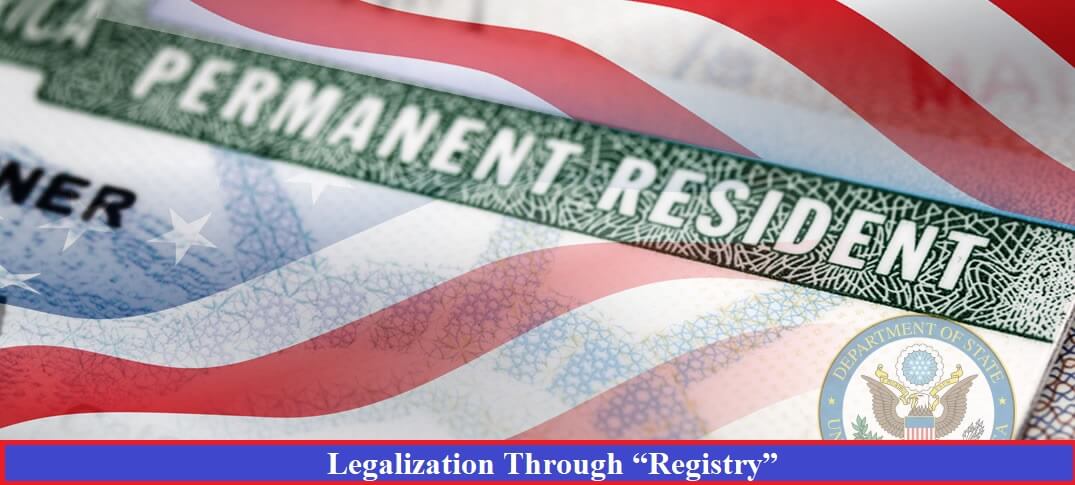US policy toward haitian immigrants is part of a long, troubled history

Shocking images have emerged of Border Patrol officers on horseback charging toward Haitian immigrants in and around...

Current immigration law contains a provision called “registry” that allows certain non-citizens who are long-term residents of the United States, but who are either undocumented or present in the country under some sort of temporary immigration status, to “register” for Lawful Permanent Resident (LPR) status. In order to qualify, individuals must have entered the country on or before a specified date (known as the “registry date”) and must demonstrate good moral character and continuous residence since their entry. After its creation in 1929, Congress advanced the registry date four times, most recently in 1986, when the date was set at January 1, 1972—meaning that only non-citizens who entered the United States by that date are eligible to apply for LPR status through registry. This date is now so far in the past that few individuals are eligible. However, Congress has the power to advance the registry date again at any time, which would potentially allow millions of non-citizens to become LPRs and, ultimately, U.S. citizens.
The original registry provision created in 1929 applied to any non-citizen who met the following conditions: entered the country prior to June 3, 1921; had continuously resided in the country since entering; demonstrated “good moral character”; was not subject to deportation under U.S. immigration laws; and for whom a record of lawful admission was not available. The registry provision was amended in 1940 and the registry date advanced to July 1, 1924. However, a more substantive revision took place in 1958. In that year, not only was the registry date advanced to June 28, 1940, but the requirement that eligible non-citizens not be subject to deportation was eliminated. Rather, the revised provision only excluded individuals who were previously granted LPR status or were inadmissible to the United States on criminal or national security grounds. As a result, non-citizens who had entered the country without inspection or overstayed a visa became eligible to apply for LPR status through registry. After 1958 the registry date was advanced twice more. In 1965 it was changed to June 30, 1948, and in 1986 it was changed for the last time to January 1, 1972. Subsequent immigration laws have expanded the list of offenses that would disqualify a noncitizen for registry eligibility.
Registry applicants do not need a U.S. petitioner, medical exam, or financial affidavit of support. Under current law, an individual without a record of lawful admission for permanent residence qualifies for registry if he or she meets the following conditions:
Over the course of just a few years after the registry date was last advanced in 1986, tens of thousands of non-citizens became LPRs under the registry provision. According to government data, 58,914 individuals benefitted from registry between Fiscal Year (FY) 1985 and FY 1989. But as the registry date receded further into the past, fewer and fewer people were eligible to apply. Only 11,191 non-citizens became LPRs through registry in the 1990s. That number fell to 2,319 in the 2000s and 911 in the 2010s.
Were Congress to again advance the registry date, millions of non-citizens who are long-term residents of the United States could potentially apply for LPR status. According to the Department of Homeland Security, 47 percent of undocumented immigrants in the United States as of 2018 (5.4 million people) had arrived before 2000. Another 37 percent (4.2 million) had arrived between 2000 and 2009. Depending on how far Congress chose to advance the registry date, a great many of these long-term undocumented residents of the United States might qualify for registry. For instance, the Center for American Progress estimates that updating the registry date from 1972 to 2010 would make 6.8 million undocumented immigrants potentially eligible to apply for LPR status.
Of course, some non-citizens would be ineligible for registry due to criminal convictions or extended absences from the United States. However, it is likely that millions of undocumented immigrants would be eligible. And eligibility could arguably include some noncitizens with temporary status, such as individuals with Temporary Protected Status (TPS) and temporary workers whose applications for LPR status are stuck in visa backlogs. Congress could make this possible by doing nothing more than changing a date in current immigration law.

